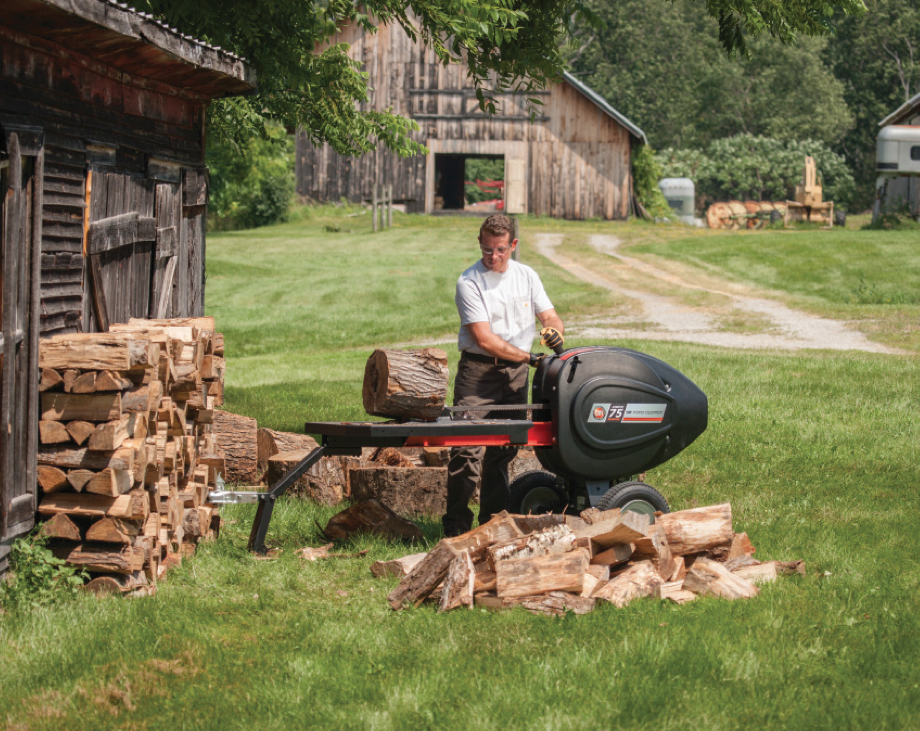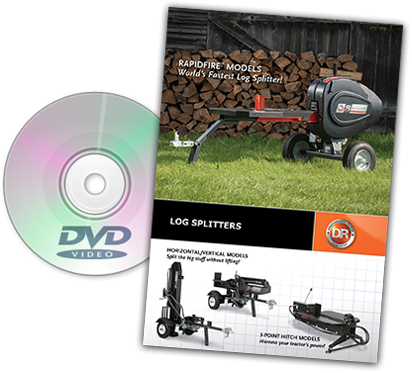Using a Log Splitter vs. Splitting by Hand
 Is using a log splitter really any better than splitting wood by hand with a maul? Anyone who splits regularly by hand has probably had this debate with themselves. Many people enjoy splitting with a maul — it’s good exercise and it can be pretty fast, depending on the type of wood and how strong you are. There are three things to think about when considering which method is best for you:
Is using a log splitter really any better than splitting wood by hand with a maul? Anyone who splits regularly by hand has probably had this debate with themselves. Many people enjoy splitting with a maul — it’s good exercise and it can be pretty fast, depending on the type of wood and how strong you are. There are three things to think about when considering which method is best for you:
1. The Wood

Some types of wood are great for splitting by hand: soft woods, wood without knots or knuckles, and wood with very a very straight grain. The reality of wood splitting, though, is that quite often you come across knotty, knuckley, not-so-straight logs. These are no picnic to split with a maul, and can really put a damper on your afternoon. Many of them even are wasted completely when people avoid the knotty pieces for the easy-to-split ones. And forget about hardwoods such as elm or beech! Most people won’t touch those with a maul.
The size of the wood plays a role as well, since the bigger ones (like those 30″ diameter beasts) will have to be hit a whole bunch of times to get down to the size you want. Granted, you’d have to split them that many times with a log splitter as well, but rearranging the log a bit and pushing a handle is a whole lot easier than swinging that heavy maul every time. And if you split logs that are even too big to easily lift onto a traditional log splitter, consider a Vertical/Horizontal model. These are specifically designed to split right on the ground, no lifting required.
2. The Person
That is, you. Splitting by hand may work fine for the 30-year-old with a buff physique. But let’s face it, that’s not all of us. Swinging a 8- or 10-pound maul all afternoon takes the vigor out of you pretty quickly, and can cause lasting back and shoulder strain to boot. It is good exercise, though, and many people enjoy that. Most splitters, though, still require a certain amount of physical input — lifting the logs onto the splitter mostly — so it’s still not a couch-potato activity. And for the easiest splitting of even the biggest logs, check out a Vertical/Horizontal model that splits right on the ground, no lifting required.
3. The Time
Consider the time that it takes to split wood by had as well. Of course, there are a lot of variables in the actual amount of time that it takes to split a cord by hand, but most people would agree that even a hydraulic splitter is faster. This is mostly because you often don’t have to let the ram extend all the way out to split a log. A lot of times, just extending a few inches into the log will make it pop apart. Plus, a log splitter doesn’t get tired and need a break after an hour or so like I do!
If speed is a particular interest of yours when you split wood, DR has all the solutions you could want — from the hydraulic Dual-Action splitters that split in both directions to the ultra-quick RapidFire kinetic log splitters, time is on your side when you split with a DR. The RapidFire has a 3-second cycle time. Compare that to a hydraulic splitter, which can range anywhere from 15 seconds to upwards of a minute.
Want to learn more about DR Log Splitters?
Order your FREE Buyer's Guide & DVD!

What's inside
- 24-Page Buyer's Guide
- Action-Packed DVD
- Money-Saving Promotions